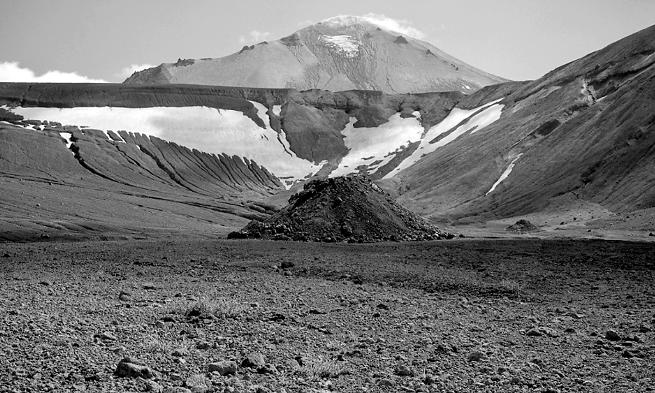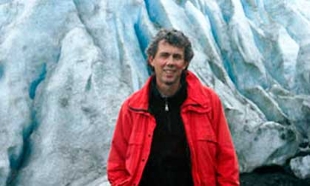Handing down an artistic tradition
Arts and Culture
In 1912, what would turn out to be the largest volcanic eruption of the 20th century transformed 44 square miles of the Alaskan Peninsula and gave birth to the Valley of 10,000 Smokes. This remote valley—preserved as part of the Katmai National Park and Preserve—has swept mountaineer, adventurer and landscape photographer Gary Freeburg up into nature's cycles of destruction and regeneration. In the centennial year of the eruption, Freeburg culminates a photographic odyssey of this raw wilderness with the publication of The Valley of 10,000 Smokes: Revisiting the Alaskan Sublime. His work has spurred colleague George Johnson to create a documentary.
Through his work with JMU students today, Freeburg is handing down a tradition stemming from his work with his mentors, Ansel Adams, Oliver Gagliani and John Schulz. The Director of JMU's Sawhill Gallery, Freeburg discusses how he uses his artistic and spiritual journey to inspire his students.
Q: You have produced some magnificent landscape photography. Attaining the depth you've been talking about has meant a lifetime of perfecting your craft and honing in your story. But it was based on serious instruction and study.
A: Well, the big thing is, I had three mentors: Ansel Adams was one, Oliver Gagliani was the second, and John Schultz was the third. They taught me three things that have stayed with me. No. 1 is that Ansel taught me more about the natural world than anybody else, because that's where he worked. He had a love for nature, which is still with me. Secondly I worked with Oliver Gagliani. He was terribly disciplined. In the darkroom and in his exposures, he put everything in a logarithm, so he understood how to make almost that perfect negative through exposing enough for the shadows and developing for the highlights and just creating the perfect negative. And he taught that there's no room to be casual and careless about what you do. You focus on it and you do it as best as you can. Both men introduced me to John Schultz, who was my graduate mentor at the University of Iowa. John gave me a sense of freedom. He said, "You take your camera and you take it off into a direction that you want to go and be free with it, free to express yourself and find your own way with it. Just do it well."
Q: How do you in turn instruct and inspire your students to develop their art?
A: I teach from that same legacy. Learn the craft. Understand how that camera works and understand how you can really get a wonderful image. That's what instruction is all about. Next, and where most of us sort of fall by the wayside is, what are we going to do with it? What are we going to express that's important? And so I usually tell my students, "tell me a story about what's important to you. "Go do a documentary. Tell me about what fishing is all about. You don't have to write it all out, just do it in photographs so that it ties together. Or tell me about something that's important to you. If your family is the premiere thing in your life, then photograph your family. I mean do the portraiture, put it together, photograph your life, within your household and your environment." It's like giving a speech. If you don't know what you're talking about, it's just going to ring hollow. That's where I take the kids. I don't usually give them assignments, because assignments are mine, not theirs. I have them create their own assignments and give them the freedom and independence to explore something.
Q: What is the essential lesson you try to impart to students who take up photography as art?
A: I encourage students to think of the story line, because in photography especially, you're dealing with truth. Today, you know, in the digital world we don't see much truth going on because you can manipulate it so much. But really the strength of photography goes back to telling the truth about what you aim that camera at. You might take away its color, as we do in black and white, which again causes you to focus on shapes and values and textures and things rather than color, but there's still an underlying truthfulness about it.
